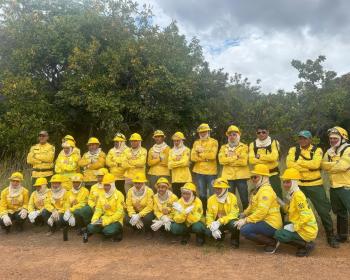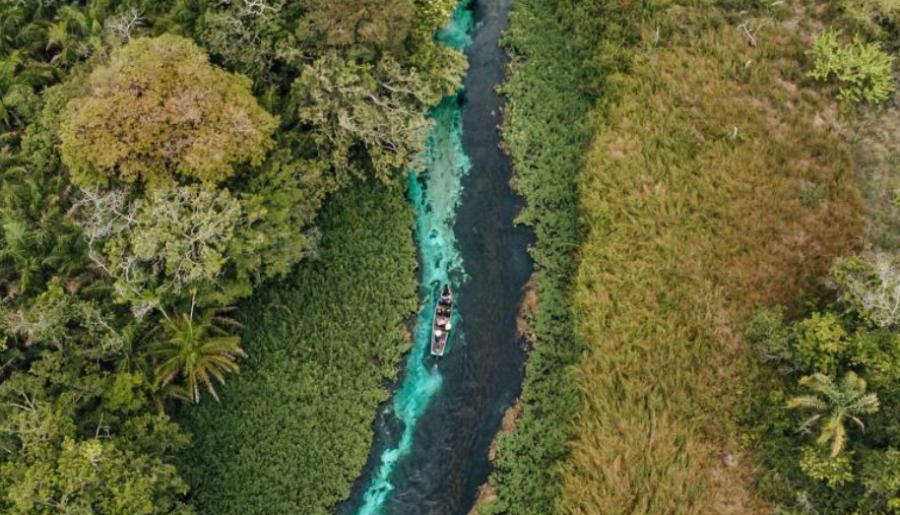From the earliest contacts between Portuguese explorers and the coastal Tupi populations in the 1500s, Catholic missionaries have provided a buffer between Brazil's Amerindian tribes and European-based nation-states. Primarily oriented to the goals of the nation-state, these missionaries saw their objective as "saving souls" through conversion of the Indians to Catholicism. A dramatic turnaround has occurred in this situation during recent years. Now the missionaries see themselves as struggling on behalf of the tribal populations against the encroaching nation-state. Rather than attempting only to convert the Indians, they are now encouraging "cultural revitalization." Indeed, missionaries have been a major force behind the general abertura (opening) in Brazil, which has resulted in a lessening of political repression everywhere by Brazil's military regime.
These general developments may be traced to Vatican Council II in 1965, which resulted in the Catholic Church taking the side of poor and underprivileged peoples - those who could not adequately defend themselves. In Brazil, this meant favelados (ghetto-dwellers) in the cities, peasant farmers (especially in the poverty-stricken northeast and in the interior), and tribal populations.
In this vein, the Conselho Indigenista Missionary (CIMI), which formed an official part of the politically powerful Conselho Nacional dos Bispos do Brasil (CNBB), was formed in 1972. Among other activities, CIMI began publishing in that year a Boletim, which contained material on Indian rights and the transgression of those rights in Brazil [Ricardo]. In 1797, with the assistance of CIMI, the important indigenous publication Porantim appeared for the first time in monthly newspaper format. Porantim is now indispensible reading for anyone with an interest in the current situation of tribal peoples in Brazil.
The first CIMI bulletins began to appear in the heyday of political repression in Brazil, 1972-1973, before there was any hint of abertura. By 1973, CIMI had published information on the land question, with maps showing how the department responsible for land allocation issues in the state of Mato Grosso was taking no account of Indian rights to land in its colonization plans. By late 1973, the Catholic missionaries and bishops of Brazil published "Documento Y-Juca Pirama - o Indio: Aquele Que Deve Morrer," a statement of opposition to official government Indian policy.
CIMI also began the first efforts to bring tribal leaders to a consciousness of the plight of their peoples and of the need to organize. Toward this end, they organized in April 1974 the first "Meeting of Indian Chiefs," which was followed in subsequent years by regional "Assemblies of Indigenous Chiefs." Those meetings took place despite resistance from FUNAI, the official government Indian agency, and even from the Federal Police.
Given the repression in Brazil at the time, it was obvious that some backlash was in the offing. In 1975, missionaries began revealing specific cases of land invasion among the Kaingang and Bororo. In that same year, Padre Jentel, a French missionary, was tried and expelled for his "subversive" missionary work. In 1976, Padre Rodolfo Lunkenbein, who had denounced the invasion of Bororo lands a year earlier, was murdered by the fazendeiros he had denounced. In late 1976, the coordinator of CIMI for all of northern Mato Grosso, Padre Joao Bosco Penido Burnier, was assassinated by the police. Yet missionary activities continued.
Catholic missionaries helped to bring about the political opening witnessed in the post-1976 period. Simultaneously, many Catholic missionaries were redirecting their missionary work. Whereas before, a good deal of the work had been directed toward transforming native cultures - teaching the Indians Portuguese and encouraging them to forget their own language and customs - now in many cases, though by no means across the board, they are trying with equal fervor to encourage cultural revitalization. Thus, where for 80 years the conservative Salesian missionaries attempted to extinguish Bororo ceremonial life, today an active effort is underway to get Bororo to perform their traditional ceremonies.
During the post-1976 period, missionary work on behalf of the tribal populations has perhaps been eclipsed by work of the secular support groups, such as the Comissao Pro-Indio and the Associacao Nacionnl de Apoio ao Indio, which were formed by anthropologists, lawyers, and ex-FUNAI workers around 1978. However, it is important to stress that the Catholic Church continues to play a key role in the unfolding drama. In addition to Porantim, the Catholic Church also supplies considerable funding for CEDI (Centra Ecumenico de Documentacao e Informacao), although the latter is technically ecumenical. CEDI publishes Aconteceu, a monthly information bulletin republishing relevant newspaper articles that have appeared about Indians, workers, peasants, and so forth. This too is indispensable reading for anyone wishing to keep up on the situation of tribal populations in Brazil today. In addition, CEDI is organizing a massive survey of Indians of Brazil, and the first of a projected twenty volumes has already appeared. This survey promises to be the single most valuable source of information on Brazilian tribal peoples. For more information on the Levantamento, write: CEDI, Levantamento das Populacoes Indigenas no Brasil, Avenida Higienopolis 983, 01238 Sao Paulo - SP, Brazil.
Among those working in CEDI, on the Indian question, are anthropologists from the universities and ex-members of FUNAI, many of whom are also active in the secular support groups. CEDI is thus a kind of bridge between the sacred and secular and it represents one of the most important recent developments in Brazil.
While the Catholic missionaries, many of whom are European by birth, have taken a generally pro-Indian orientation in the recent period, their activities should not be confused with those of the Catholic Church per se. Since the founding of Brazil, the latter has been primarily a conservative force, supporting the prevailing social configurations. In some measure, it continues to be so, despite Vatican II and despite the activities of Catholic missionaries. Hence, the not altogether infrequent appearance in newspapers of denunciations of missionary activity by Catholic bishops themselves. Nevertheless, missionaries occupy the front line in relations between tribal populations and the Catholic Church. Their activities have thus far had the greatest effect in shaping the recent situation of tribal peoples in Brazil.
Since post-1964 Brazil is built upon the twin pillars of Catholic Church and military state, the transformation in missionary attitudes and activities may be of far-reaching significance. An important sector of the church has devoted itself to working on behalf of the Amerindian populations, supporting indigenous political aims where necessary, even in opposition to those of the military state. Simultaneously, however, as the tribal peoples themselves become more conversant with national-level politics, they are attempting to achieve a political voice of their own on the national scene, and so to eventually end the mediating role of the church. This places Catholic missionaries in an unstable role, serving only as midwives of a transformation in government-Indian relations. Whether the missionaries can carry out this two-sided task - of struggling on behalf of the tribal populations, but also encouraging tribal autonomy even in relation to the Catholic Church - is something only the future can reveal.
Article copyright Cultural Survival, Inc.



